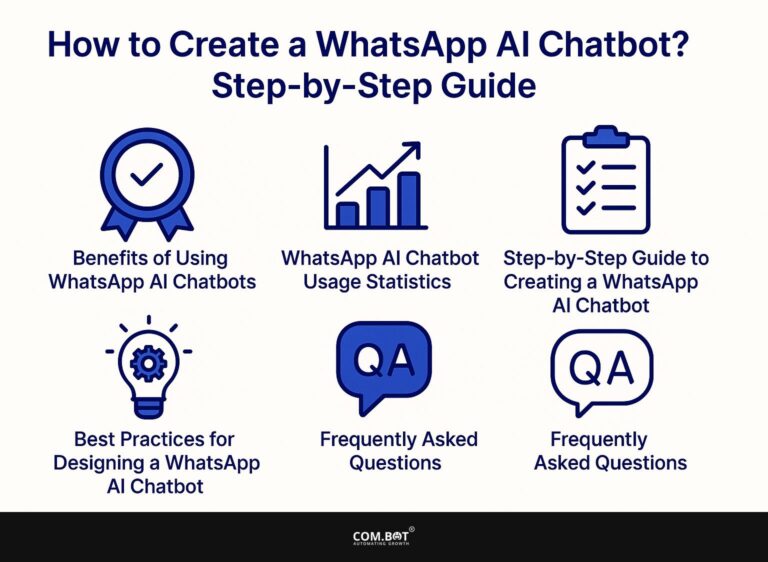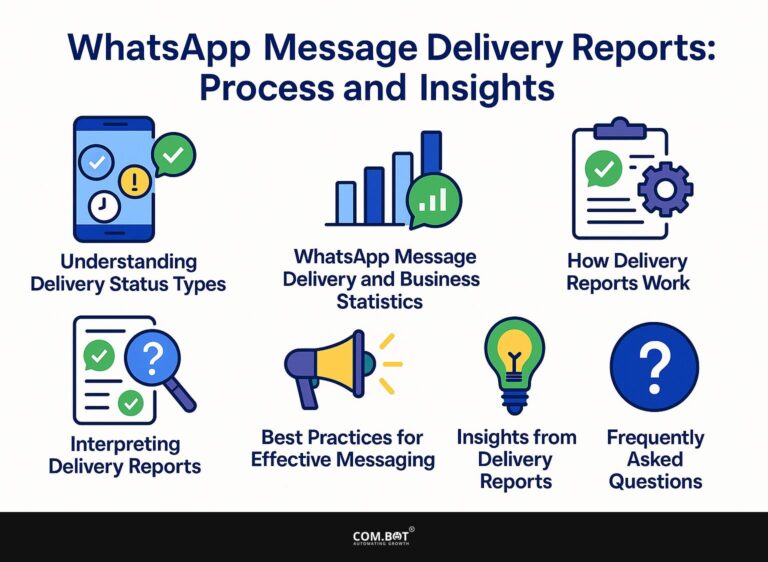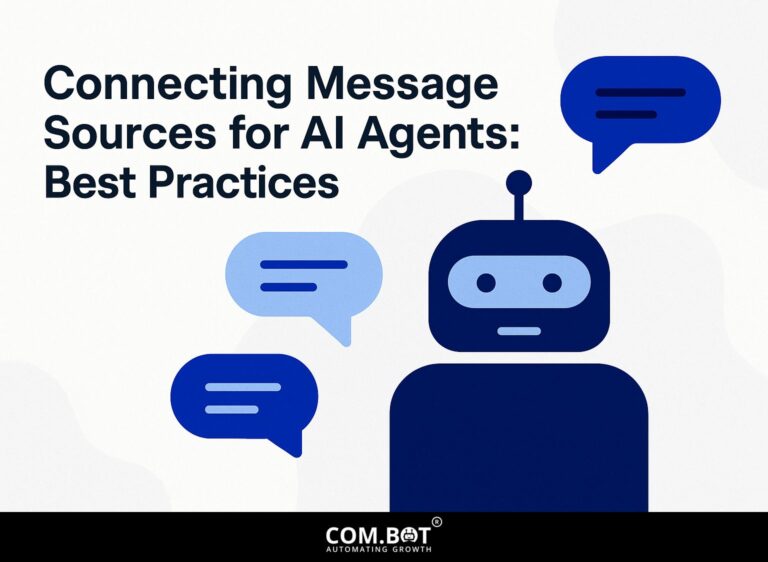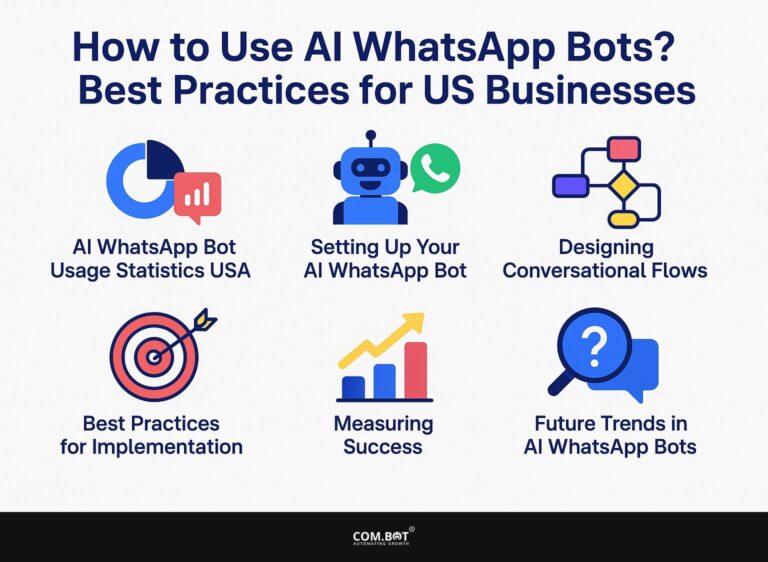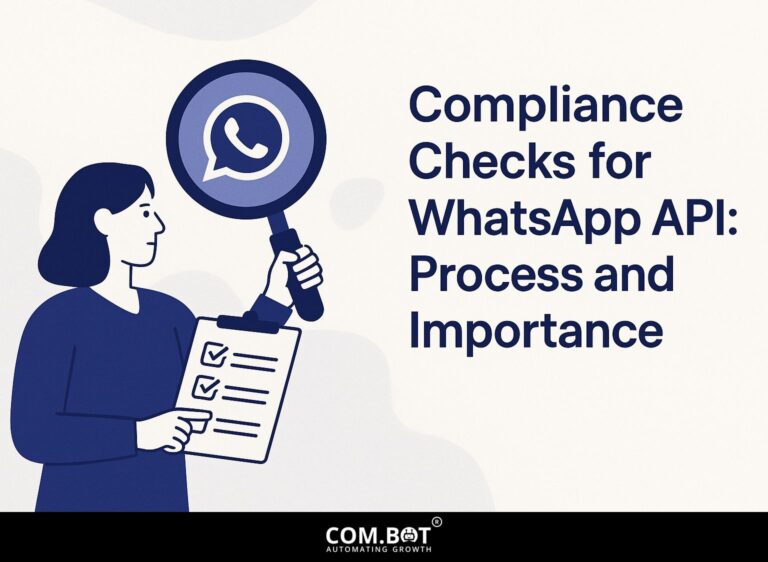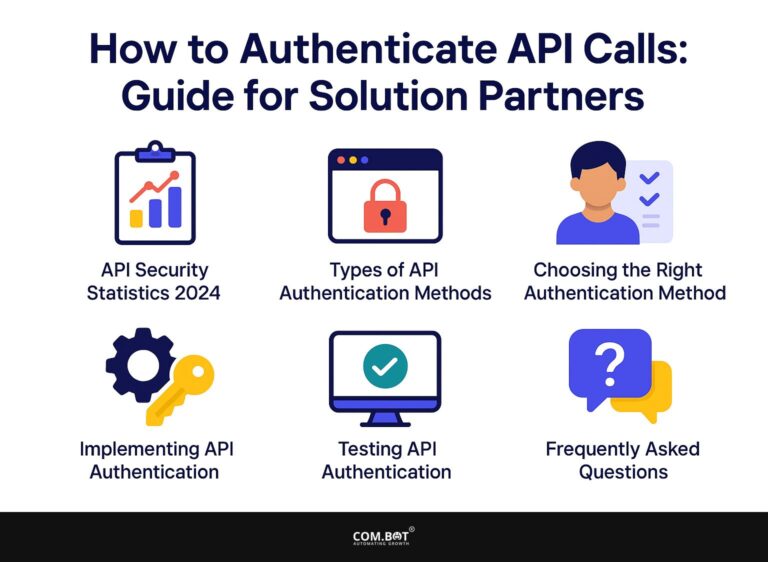WhatsApp Chatbots: Lead Generation Strategies and Workflow
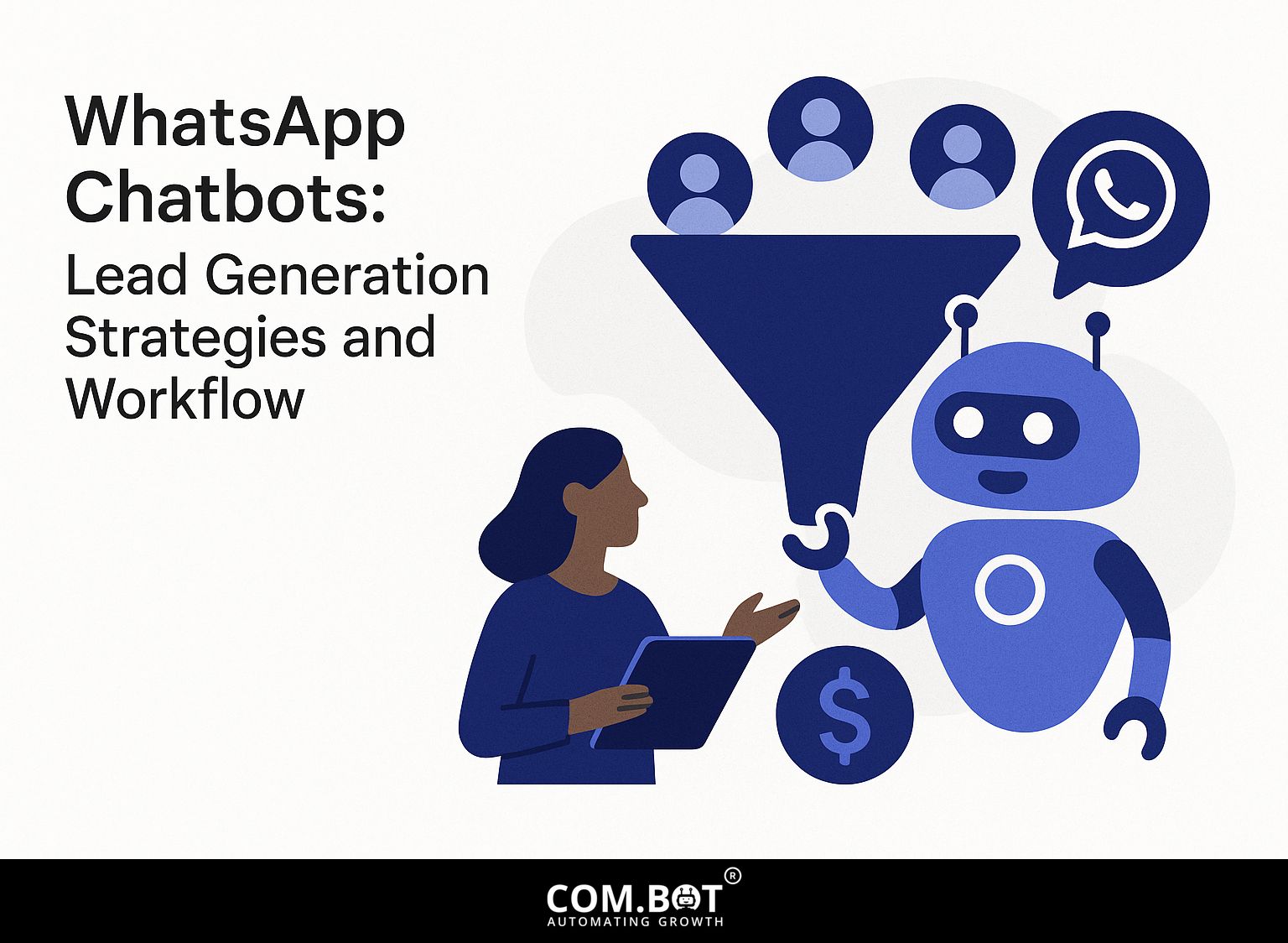
Generating leads is now simpler with WhatsApp chatbots. These effective tools improve customer service with real-time messaging, creating custom campaigns that connect with users. Platforms like HubSpot and Twilio are revolutionizing how businesses connect with clients. This article looks at useful methods for using WhatsApp chatbots to make work processes more efficient and increase interaction, helping you stay competitive in digital marketing.
Key Takeaways:
- WhatsApp chatbots are tools that can automatically talk with people and help find potential customers effectively.
- Integrating your chatbot with the WhatsApp Business API allows for a seamless user experience and increased lead generation potential.
- Creating clear paths for users and personalizing experiences are important for generating leads with WhatsApp chatbots.
- 1 WhatsApp Chatbot Lead Generation Statistics
- 2 WhatsApp Chatbot Lead Generation Statistics
- 3 Setting Up Your WhatsApp Chatbot
- 4 Lead Generation Strategies Using WhatsApp Chatbots
- 5 Creating Effective Workflows
- 6 Best Practices for WhatsApp Chatbots
- 7 Frequently Asked Questions
- 7.1 1. What are WhatsApp chatbots for lead generation?
- 7.2 2. How do WhatsApp chatbots help with lead generation?
- 7.3 3. What are some effective lead generation strategies for WhatsApp chatbots?
- 7.4 4. How can I use WhatsApp chatbots in my process for generating leads?
- 7.5 5. What should I consider when designing a WhatsApp chatbot for lead generation?
- 7.6 6. Can WhatsApp chatbots be used for lead generation in all industries?
1. What is a WhatsApp Chatbot?
A WhatsApp chatbot is a tool that interacts with users on WhatsApp, providing fast responses and customized communication. These chatbots use the WhatsApp Business API to make customer interactions easier by managing regular tasks quickly.
For example, companies often use chatbots to handle frequently asked questions, allowing them to give quick answers to customer questions without needing a person to respond. Chatbots can help with order tracking, giving customers real-time updates on their purchases.
Booking services also benefit significantly; users can schedule appointments directly through the chatbot, eliminating the need for cumbersome back-and-forth communication. Industries such as retail, healthcare, and hospitality often use these systems to improve customer satisfaction and save time.
2. Importance of Chatbots in Lead Generation
Businesses that use chatbots might see a big jump in lead creation, with conversion rates possibly going up 30% through approaches such as interactive marketing. These tools engage users in personalized discussions to find potential customers.
For example, Animal Equality used WhatsApp to send automatic replies, collecting more than 1,000 possible donors in a month. By creating specific campaigns based on user actions, chatbots can provide useful information and easily follow up on questions.
Studies show that 70% of users prefer messaging over traditional emails, underscoring the importance of adopting chatbots in your sales strategy. Think about platforms like Drift or Intercom, which provide strong data analysis to improve how you gather potential customers.
WhatsApp Chatbot Lead Generation Statistics
WhatsApp Chatbot Lead Generation Statistics
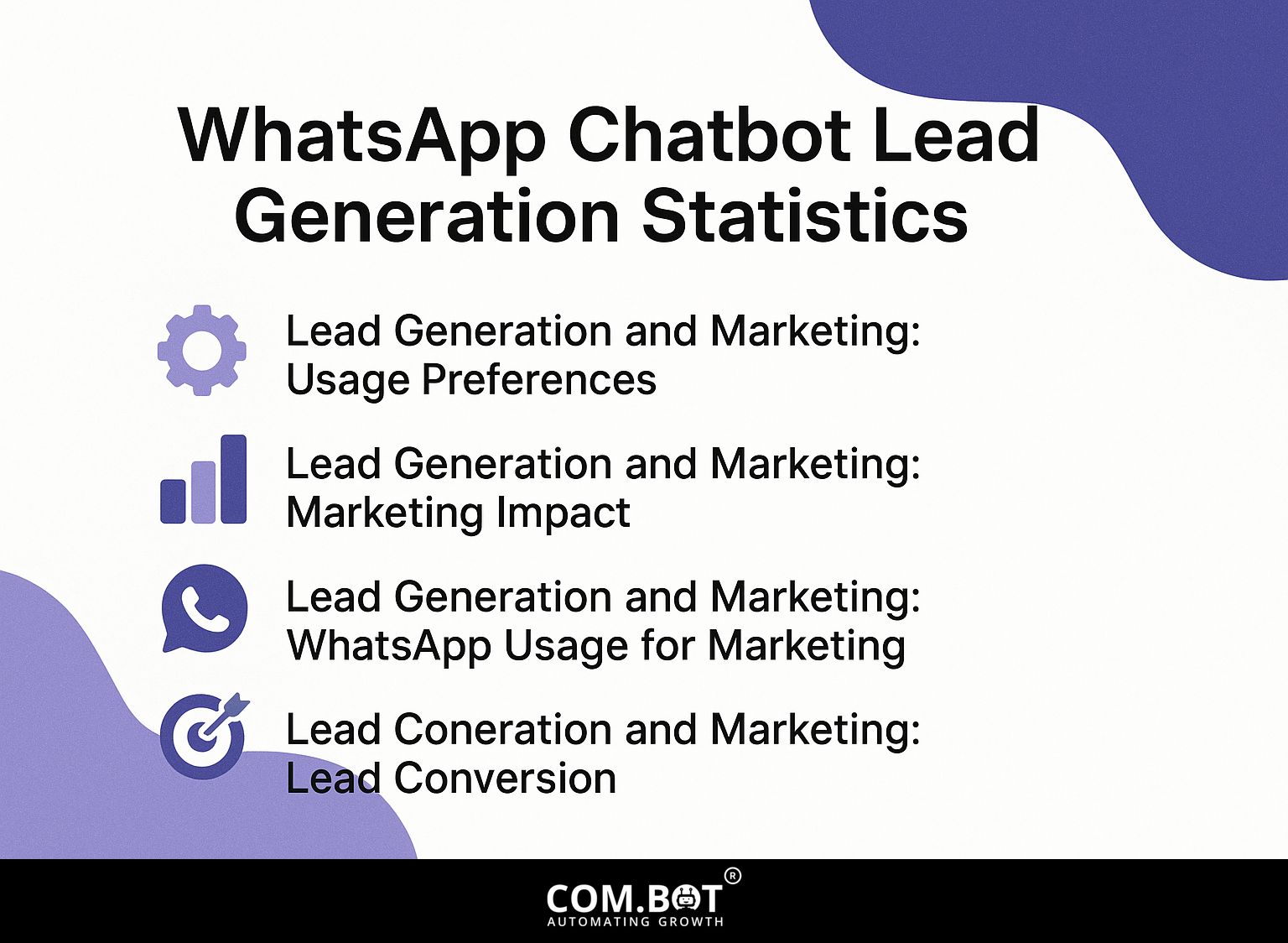
Understanding WhatsApp Chatbot Lead Generation is crucial for businesses looking to enhance customer engagement and conversion rates. As mentioned, a strategic approach to designing these chatbots can significantly impact efficiency and user experience. For those interested in exploring detailed design strategies, our comprehensive guide on WhatsApp Chatbot Design: Steps and Examples offers valuable insights.
Lead Generation and Marketing: Usage Preferences
Lead Generation and Marketing: Marketing Impact
Lead Generation and Marketing: WhatsApp Usage for Marketing
Lead Generation and Marketing: Lead Conversion
The WhatsApp Chatbot Lead Generation Statistics Data gives important information about how well WhatsApp chatbots work for marketing and finding potential customers. It highlights consumer preferences, marketer challenges, and the impact of chatbots on lead generation and customer satisfaction.
Lead Generation and Marketing reveal that 89.0% of consumers prefer messaging for communication with businesses. This strong preference highlights why businesses should use messaging platforms like WhatsApp to communicate with their customers. Despite this preference, 61.0% of marketers find lead generation a major challenge, indicating a potential gap that WhatsApp chatbots can fill.
- Marketing Impact: Concentrating on gaining potential customers can greatly increase income, with a 20.0% growth reported from such efforts. The statistics show that WhatsApp is a widely used platform, with 140 billion messages exchanged every day and an outstanding 98.0% High open rates for messages make it an effective way for businesses to connect with their audience.
WhatsApp Usage for Marketing illustrates consumers’ engagement with the platform, spending 30 minutes daily on WhatsApp. The high volume of daily message exchanges, at 140 billion, highlights the platform’s extensive reach and potential for real-time interaction with customers.
Lead Conversion Data indicates chatbots greatly influence business results. The use of chatbots has led to a 102.0% increase in lead generation, demonstrating their effectiveness in capturing and converting leads. Customer satisfaction has increased by 200.0% Using chatbots with automated, quick replies makes the customer experience better and increases interaction.
Overall, the WhatsApp Chatbot Lead Generation Statistics Using chatbots in marketing plans can help solve problems with getting new leads, improve how happy customers are, and increase income. Since people prefer messaging and WhatsApp has high engagement rates, businesses have a strong reason to use chatbots to improve their lead generation.
Setting Up Your WhatsApp Chatbot
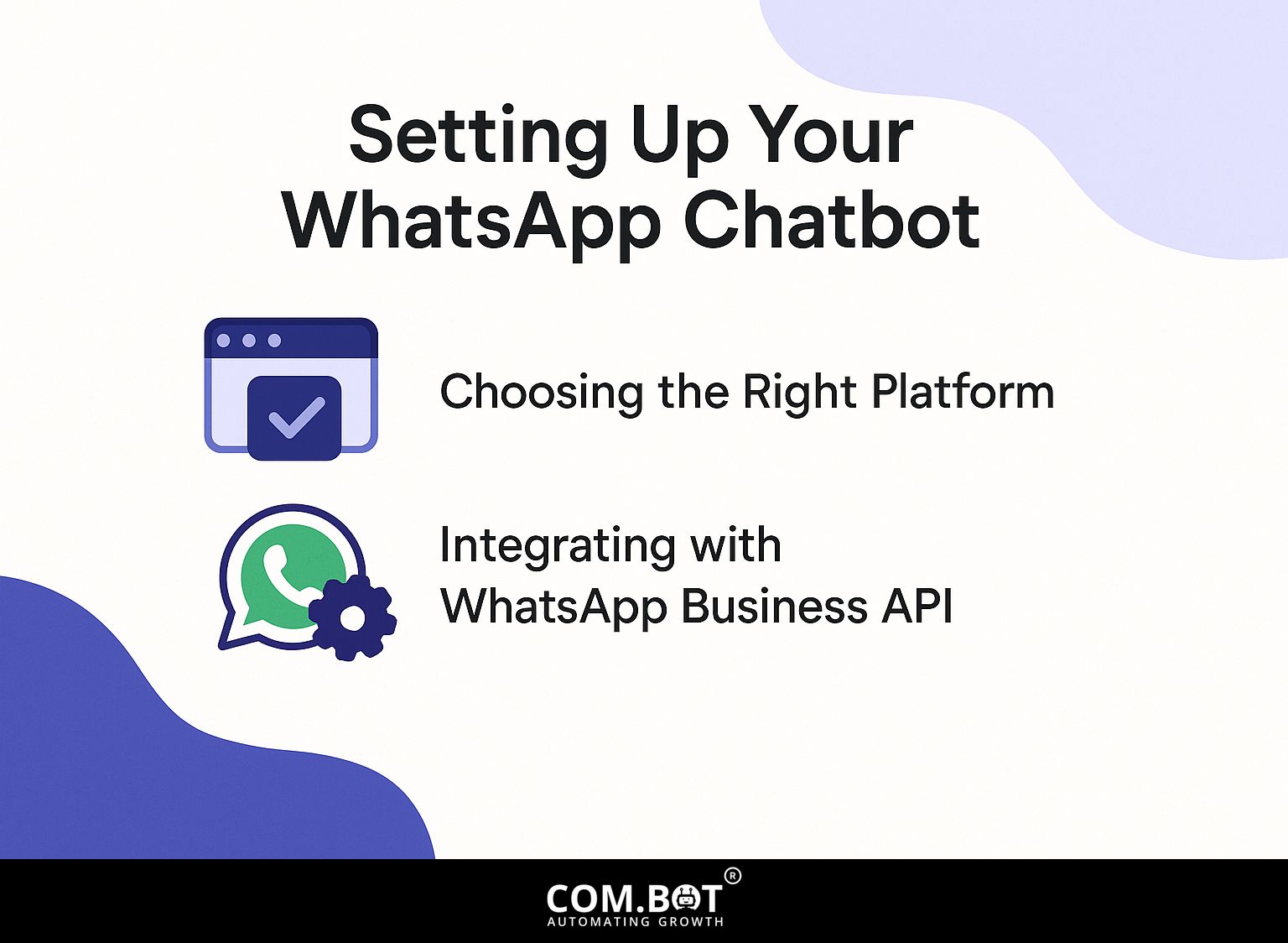
Creating a WhatsApp chatbot requires choosing a suitable platform and connecting it with the WhatsApp Business API to improve customer interactions. For an extensive understanding of the WhatsApp API setup, including its components and benefits, you can refer to our deep dive into the WhatsApp API setup.
1. Choosing the Right Platform
Choosing the right platform is important; options like Twilio and HubSpot provide strong support for building WhatsApp chatbots.
- Twilio charges based on usage, which is great for companies that need flexible pricing without a long-term contract. Its API offers many options for customization.
- HubSpot, starting at $50/month, offers seamless CRM integration, perfect for businesses focused on lead management and customer relationships.
- If you’re searching for an affordable option, Kommuncate is priced at $25 per month. It’s perfect for small businesses that require simple bot features.
Evaluate your specific business needs to choose the platform that best aligns with your goals.
2. Integrating with WhatsApp Business API
Integrating with the WhatsApp Business API involves setting up your account, configuring webhooks, and managing message templates for effective customer service.
Start by creating a WhatsApp Business account and completing the verification process, which typically takes 1-2 hours. Next, configure your webhooks to receive real-time notifications about incoming messages. This step requires setting up a server to handle the callbacks effectively; using services like Ngrok can simplify this process.
Manage your message templates within the WhatsApp Business Manager, ensuring they meet WhatsApp’s guidelines to prevent rejection.
Common pitfalls include incorrect webhook URLs and unapproved message templates, so double-check these elements during setup.
Lead Generation Strategies Using WhatsApp Chatbots
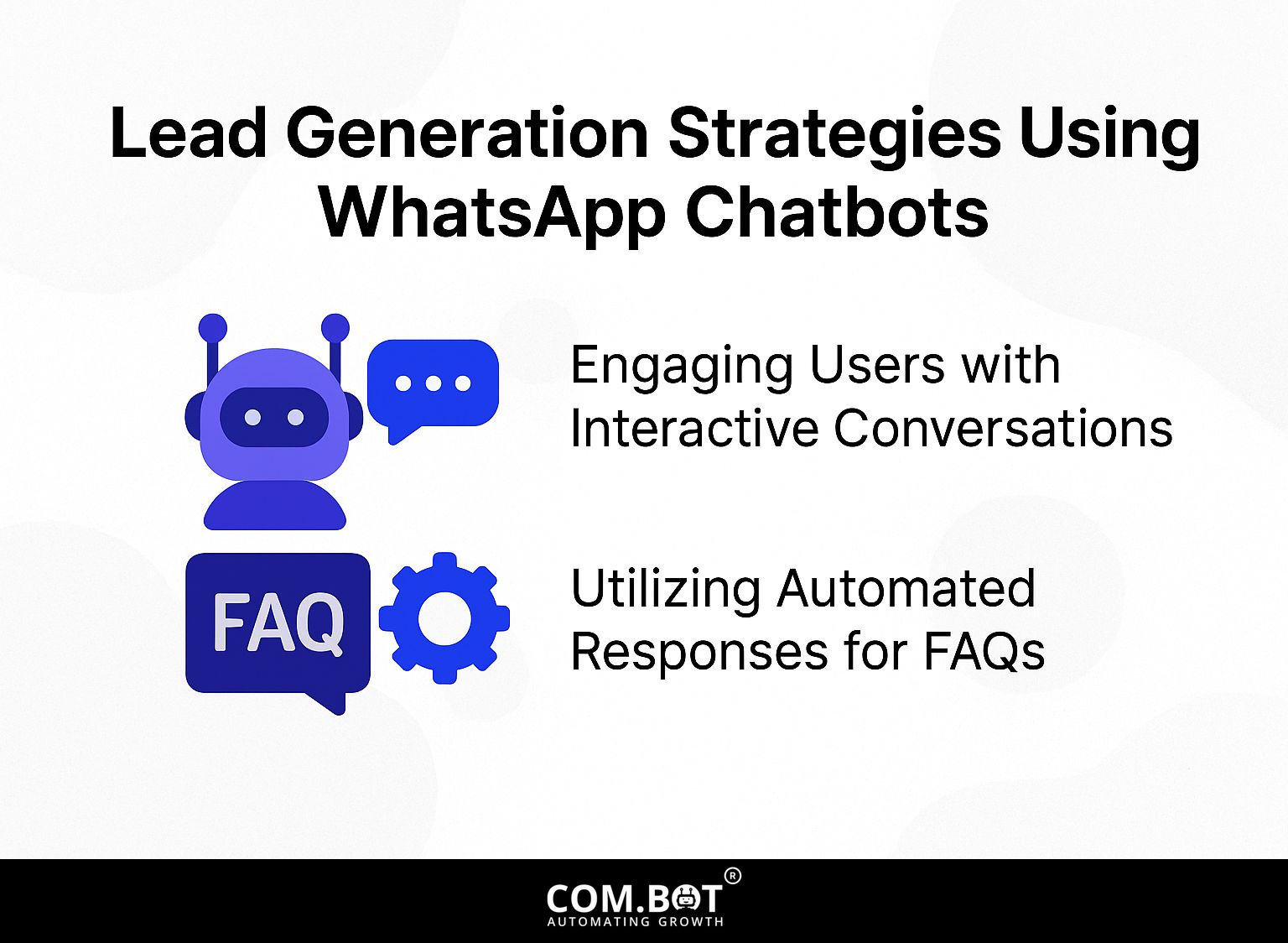
Generating leads effectively with WhatsApp chatbots involves creating interesting conversations and using automatic replies for frequently asked questions. If you’re interested in the technical details of building these chatbots, you might appreciate our step-by-step guide on creating a WhatsApp AI Chatbot.
1. Engaging Users with Interactive Conversations
Using WhatsApp chatbots for two-way communication can greatly improve user involvement, as customized messages lead to more replies. To make your chatbot chats better, try using quick reply buttons. They make it easier for users to respond and help conversations continue smoothly.
For instance, a restaurant might use buttons for menu categories, allowing patrons to effortlessly browse options. Using multimedia content like images or GIFs can increase interest. For example, a fashion store might post visual style guides when people ask about the latest products.
Custom greetings based on a person’s actions, such as previous buys, can make people feel welcome. These strategies have been shown to increase response rates by up to 30%.
2. Utilizing Automated Responses for FAQs
Using automatic responses for frequent questions allows businesses to handle more requests without lowering service quality.
To set up automatic responses, you can use Landbot to build chatbots or WhatsApp’s built-in tools for automated messages.
Start by identifying common questions your customers ask, then draft clear, concise responses. It’s best to use clear language and keep a friendly tone.
Regularly update your FAQ database based on user interactions, which can be facilitated by tracking frequently triggered responses. This repeated process keeps your automatic responses useful and effective, saving time and improving customer happiness.
Creating Effective Workflows
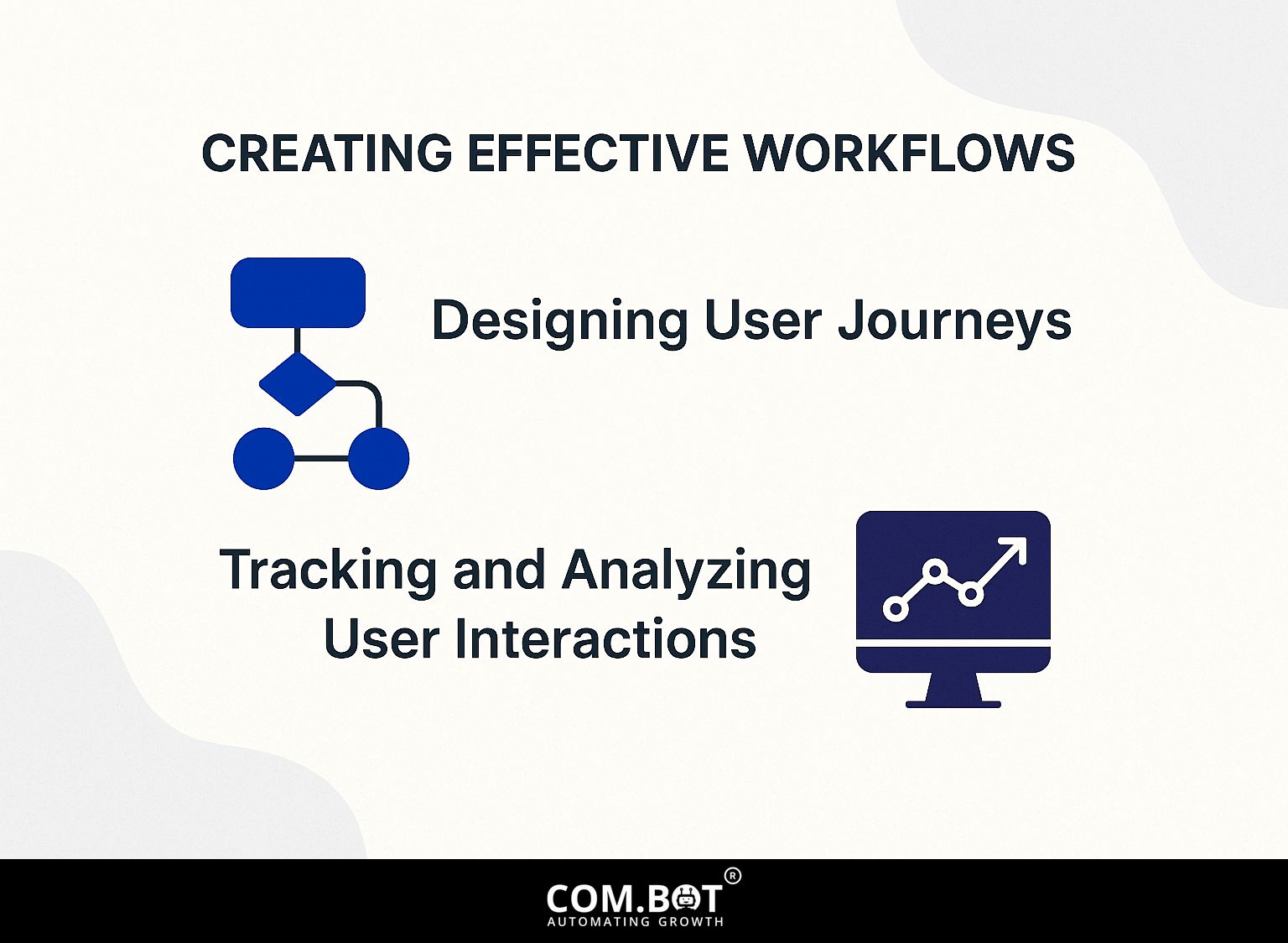
Building clear workflows is essential for users to use your WhatsApp chatbot without difficulty.
1. Designing User Journeys
Creating user paths for WhatsApp chatbots means setting up conversations so users get experiences that match their needs.
Begin by finding important points in the user’s experience, like first interactions, instant responses, and common questions. Use tools like Miro to create visual diagrams of the user’s experience, showing what the user needs at each stage.
For example, if a user starts by asking about product features, the chatbot should reply with content that matches the user’s needs or suitable choices. Use a template with these sections: Introduction, Request, Help, and Summary. Make it easy to change depending on what users say or do. This method makes the user experience better and faster.
2. Tracking and Analyzing User Interactions
Looking at how users interact can give helpful details about customer behavior, helping companies make their marketing efforts better.
- Start by integrating Google Analytics to monitor user behavior on your website. Focus on metrics like session duration, pages per session, and bounce rates to understand user engagement.
- Use the WhatsApp API to collect data on how quickly responses are given and how often conversations end unexpectedly. By comparing these metrics, we can see where users stop engaging and how fast they get help.
- By checking this data often and changing your content or response plans as needed, you can increase how users engage and improve lead conversions a lot.
Best Practices for WhatsApp Chatbots
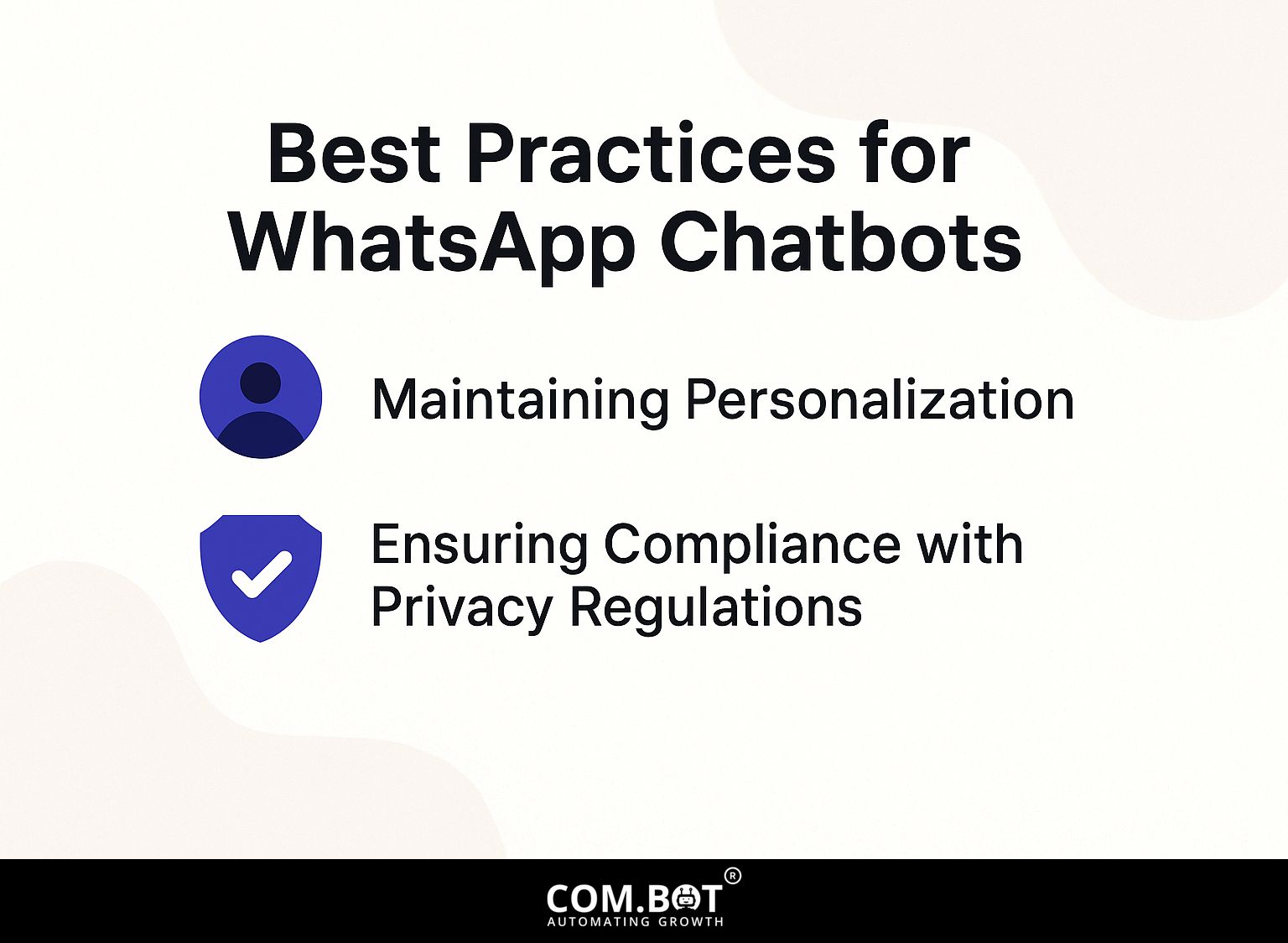
Following effective strategies for WhatsApp chatbots is important to keep users interested and follow rules. It’s crucial to understand the steps and examples of WhatsApp chatbot design to ensure your bot meets user expectations and regulatory standards.
1. Maintaining Personalization
Making WhatsApp chatbots more personalized can increase customer satisfaction and loyalty since 80% of people prefer experiences that feel personal to them.
To do this, brands can make good use of user data. For example, by dividing customers based on what they bought before or what they like, brands like Nike send customized messages with specific product suggestions directly to customers.
By using CRM tools like HubSpot, you can quickly modify messages according to user interaction, creating a more engaging experience.
Using methods like addressing users by their name or mentioning what they bought before can greatly improve interaction, building a closer connection between the customer and the brand.
2. Ensuring Compliance with Privacy Regulations
Following privacy rules is important when setting up WhatsApp chatbots, particularly with GDPR and other data protection laws. To achieve this, first, obtain explicit user consent before collecting any data, perhaps through a clear opt-in checkbox.
Next, implement strong data security measures, such as encryption for stored information. It’s also essential to provide users with easy access to your privacy policies, ensuring transparency.
Regularly reviewing your processes and data handling practices is important to find and correct compliance issues. Think about using tools like OneTrust for handling audits and privacy checks. These tools make it easier to keep up with changing regulations.
Frequently Asked Questions
1. What are WhatsApp chatbots for lead generation?
WhatsApp chatbots for lead generation are automated tools that use artificial intelligence to talk with people on WhatsApp. These chatbots are designed to engage with potential leads and gather information that can be used for marketing and sales purposes.
2. How do WhatsApp chatbots help with lead generation?
WhatsApp chatbots help gather new contacts by providing easy and personalized conversations for potential customers. They can talk to users live, collect information, and suggest suitable products or services, leading to more sales and interest.
3. What are some effective lead generation strategies for WhatsApp chatbots?
Some effective ways to generate leads with WhatsApp chatbots are to give rewards, share helpful content, use features that engage users, and make interactions more personal. It’s important to have a clear call-to-action and a well-planned chatbot process to help users take the desired steps.
4. How can I use WhatsApp chatbots in my process for generating leads?
WhatsApp chatbots can be added to your lead generation process by connecting them with your CRM system, designing focused campaigns, and arranging automatic follow-up messages. It’s important to frequently check and improve your chatbot process for the best results.
5. What should I consider when designing a WhatsApp chatbot for lead generation?
When designing a WhatsApp chatbot for lead generation, it is important to consider your target audience, the purpose of your chatbot, and the type of information you want to gather. It is also essential to provide a seamless and user-friendly experience, as well as regularly test and update your chatbot for optimal performance.
6. Can WhatsApp chatbots be used for lead generation in all industries?
Yes, WhatsApp chatbots can be used for lead generation in a variety of industries, including retail, healthcare, finance, and more. If your audience uses WhatsApp, you can use chatbots to interact with potential customers and increase sales.
